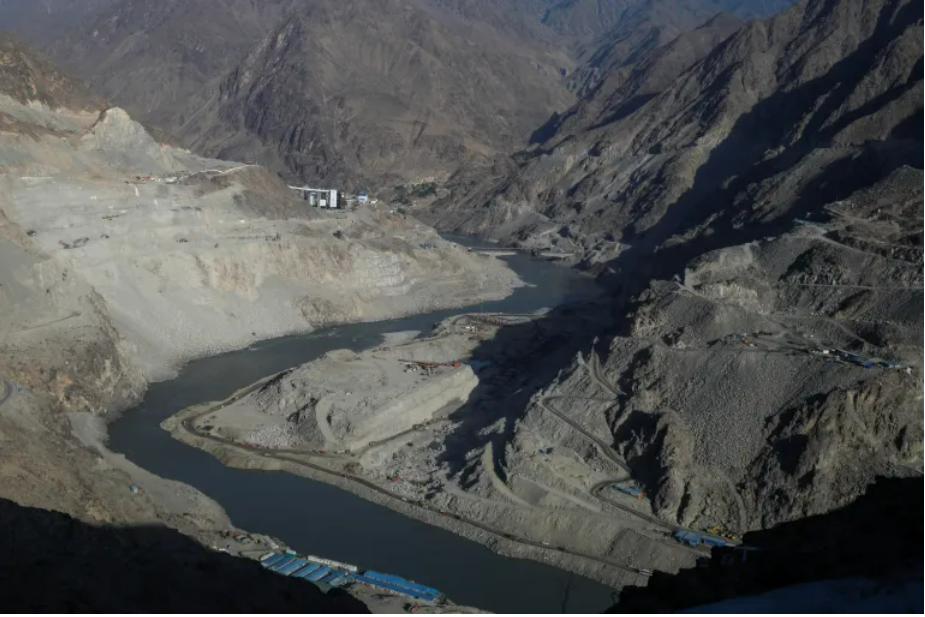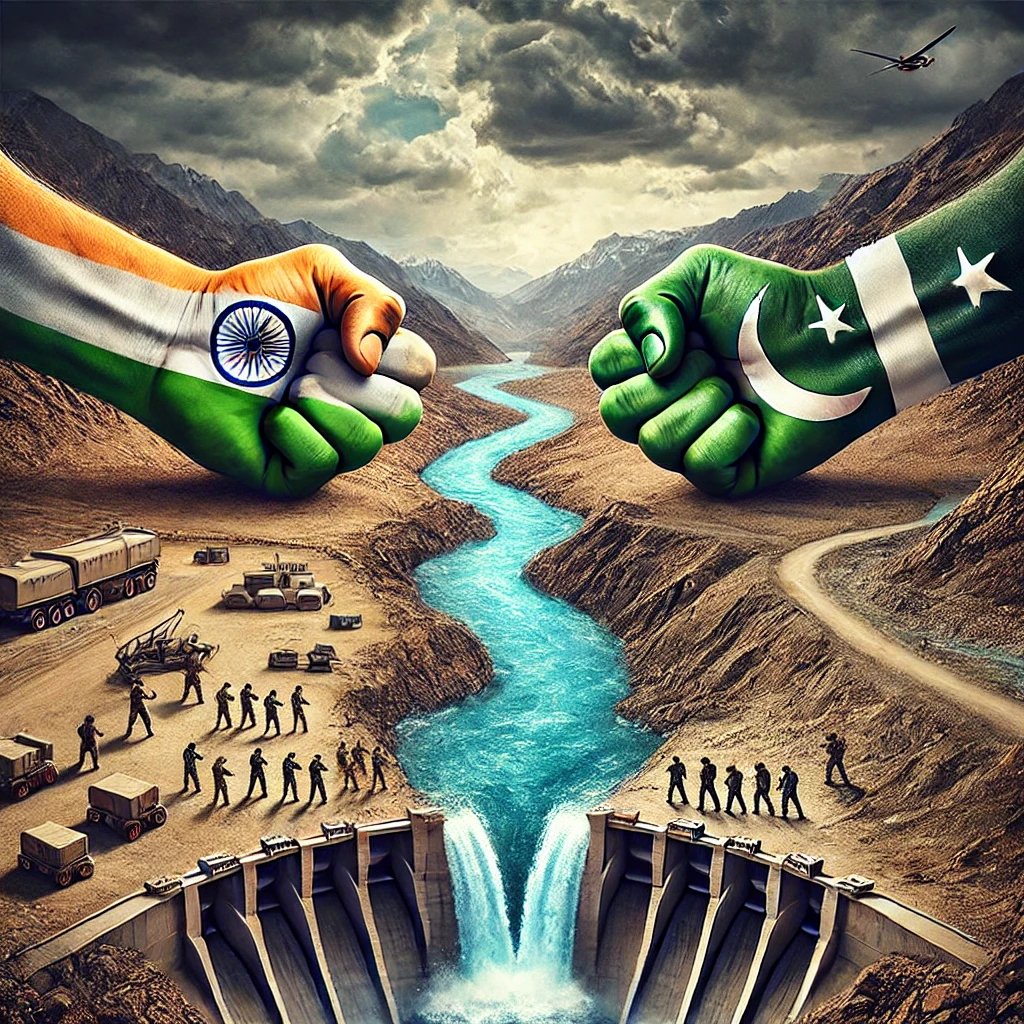How India's Push to Renegotiate Water Shares Offers a Water-Tight Global Lesson
THE WORLD ORDER
9/26/20246 min read


Crisis Mitigation Bureau


India’s recent move to modify the Indus Waters Treaty (IWT) represents a pivotal moment in the history of international water agreements. While the treaty has long been celebrated as a cornerstone of peaceful water-sharing, India's demand for renegotiation reflects evolving national priorities and larger global challenges such as climate change, demographic shifts, and geopolitical instability. Far from being a technical adjustment, India’s actions challenge long-held assumptions about transboundary water treaties and how they need to adapt to a radically changing global landscape.
This write-up explores why India’s call for reforming the IWT is justified and crucial for future water diplomacy. It delves into how climate realities, population pressures, and regional security concerns are converging to reshape how water is managed between nations. The Indian move is a test case for a broader question: Can international treaties that were created in a different era, under vastly different circumstances, still serve their original purposes today?
1. Indus Waters Treaty: A Static Agreement in a Dynamic World
The Indus Waters Treaty (IWT), signed in 1960, has often been hailed as a model of conflict resolution. Facilitated by the World Bank, it divided the six-river Indus system between India and Pakistan, allocating 80% of the waters to Pakistan and 20% to India. This division was considered generous on India’s part, especially given that it controls the headwaters of these rivers. Despite multiple wars and enduring hostilities, the IWT has survived for over six decades, largely due to its detailed mechanism for water-sharing and dispute resolution.
However, the world in 2024 is very different from the one in 1960. The treaty was crafted in a period when environmental pressures like climate change were unknown, when population densities were far lower, and when technological capabilities for river management were still in their infancy. Today, the Indus River basin is under significant stress from rising temperatures, altered rainfall patterns, melting glaciers, and increased water demands from growing populations in both India and Pakistan. India's recent formal notifications to review the treaty, made in January 2023 and reiterated in 2024, reflect this changing reality. The Indian government has argued that the IWT no longer serves the interests of the region, particularly given new priorities like energy security, environmental protection, and national security.
This move represents an important challenge to the notion that water-sharing treaties are inherently permanent. Instead, India’s push to renegotiate suggests that treaties must evolve to stay relevant. Just as economic or military treaties are often updated in light of new realities, water-sharing agreements need to be similarly dynamic.
2. Climate Change: The Great Disruptor of Water Politics
The IWT’s provisions are deeply vulnerable to the unpredictable and increasingly volatile impacts of climate change. The Himalayan glaciers, which feed the Indus and its tributaries, are melting at alarming rates due to global warming. The UN’s Intergovernmental Panel on Climate Change (IPCC) predicts that the region could see a 45% reduction in glacier volume by 2100. This shift is expected to create severe seasonal imbalances in river flow, with periods of intense flooding followed by longer droughts.
These changes are already being felt. For instance, unseasonal flooding in Kashmir and erratic water availability in Punjab are becoming more frequent. If climate patterns continue along this trajectory, both India and Pakistan will face acute water shortages during key agricultural seasons. However, the IWT, in its current form, does not address these scenarios. It assumes that river flows will remain relatively stable and does not include mechanisms to deal with the dramatic fluctuations expected from climate change.
India, recognizing the existential threat posed by these environmental changes, sees the need for a more adaptive and climate-responsive treaty. The existing treaty’s rigid allocation of water resources cannot account for the unpredictable shifts in water availability. Therefore, India's push to modify the IWT could be seen as a proactive step to future-proof the agreement, ensuring it reflects new environmental realities that neither country can afford to ignore.
3. Demographic Pressures and the Need for Equitable Water Allocation
Another critical factor pushing India to revisit the treaty is the population explosion in the region. Since 1960, India’s population has more than tripled, while Pakistan’s has also seen dramatic growth. With these increases come far greater demands on water for agriculture, industry, and domestic use. The IWT’s original allocation of water, while generous to Pakistan, was based on 1960s demographics and socio-economic needs. Today, these allocations seem outdated, especially considering India’s current development goals.
India argues that it needs a larger share of the Indus waters to meet its rising water needs, particularly in the water-scarce regions of Jammu & Kashmir and Punjab, which depend heavily on rivers like the Chenab and Jhelum—currently allocated to Pakistan under the treaty. Additionally, India’s growing push toward renewable energy, specifically hydroelectric power, is another factor. The construction of run-of-the-river hydroelectric projects like the Kishanganga and Ratle projects in Jammu & Kashmir is a key part of India’s clean energy strategy, but Pakistan views these projects as violations of the IWT.
India’s argument is rooted in equity and fairness: Can a treaty designed for an agrarian economy of the 1960s continue to dictate water use in a 21st-century economy with vastly different needs? If Pakistan has the right to use 80% of the river waters for its agriculture, why shouldn’t India have the right to use a greater share for its own industrial and energy needs?
PIC: ChatGPT
Who We Are:
The Economic Nations champions global unity through economic collaboration, focusing on sustainable growth, reducing inequalities, and enhancing global relationships for mutual prosperity and peace.
______________________________________
4. Security and Geopolitical Realities: Beyond Water
India’s demand for a treaty revision also stems from security concerns. For years, Pakistan has been accused of supporting cross-border terrorism, particularly in the Jammu & Kashmir region. Given the centrality of water to Pakistan’s economy—its agricultural sector relies on Indus River irrigation—India’s control over the upstream waters is a powerful leverage point. By raising the possibility of revisiting the IWT, India is signaling that it is prepared to use water as a strategic asset in its broader security strategy.
India’s intent here is not to cut off Pakistan’s water supply—a scenario that could lead to a major international crisis—but to signal its willingness to renegotiate the terms of water usage in a way that reflects new geopolitical realities. Pakistan’s repeated challenges to India’s hydroelectric projects and its refusal to engage in dialogue regarding these developments further underscore the need for a more contemporary treaty framework that recognizes water as a security issue.
5. The Future of International Water Treaties: India as a Test Case
India’s call to reform the IWT raises broader questions about the future of international water-sharing treaties. Most of these agreements, like the IWT, were created in the 20th century and reflect the political, environmental, and technological realities of that era. As climate change accelerates and the global population surges, the limitations of these treaties become glaringly obvious.
India’s actions are a wake-up call for the international community. If the IWT can be modified to account for modern-day pressures, it could serve as a template for revising other outdated treaties. For instance, the Nile Basin countries are embroiled in similar disputes over the equitable sharing of water, and the lessons from the IWT renegotiation could be applied to future agreements in Africa, the Middle East, and beyond.
At the heart of this challenge lies a crucial question: Can international water law evolve quickly enough to address the urgent and interconnected challenges of climate change, population growth, and security concerns? India’s bold move suggests that it is no longer feasible to rely on treaties crafted in a different world. Instead, nations must come together to design more flexible, adaptive, and resilient frameworks that can withstand the pressures of the 21st century.
Conclusion: A Necessary Shift in Global Water Diplomacy
India’s call to renegotiate the Indus Waters Treaty is not just a regional issue—it is a harbinger of things to come in global water politics. As environmental, demographic, and security pressures continue to mount, international water treaties will need to be reconsidered, restructured, and reimagined. Far from being an aggressive move, India's demand for modification represents a forward-looking strategy aimed at ensuring water security for all parties involved.
By confronting these realities head-on, India is setting a new precedent in global water diplomacy—one that recognizes the changing landscape of water security in a world where the old rules no longer apply.
Contacts
enquiry@economicnations.org
(xx) 98-11-937-xxx (On verification)
